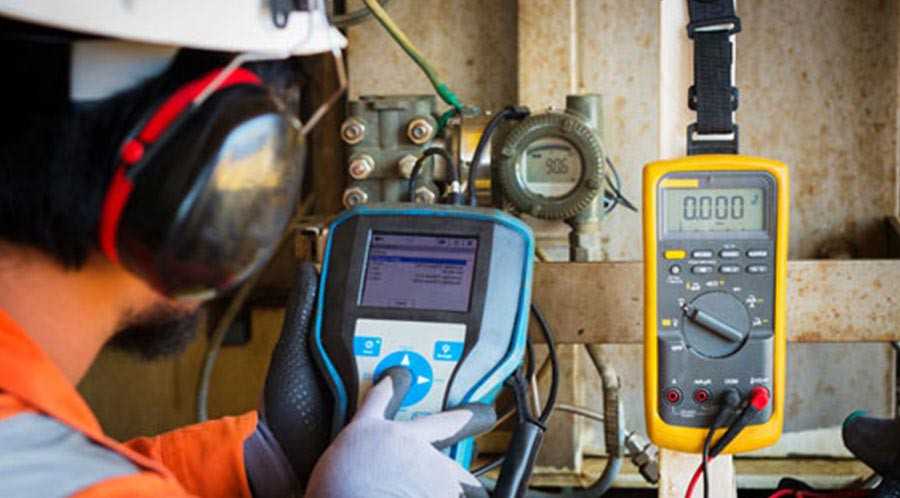What calibration means for your Flow Meter?
A calibration process involves correctly setting up the measuring instrument so that it enables accurate reading on the scale. In other words, the comparison of an instrument or a measuring device to a standard reference is known as Calibration.
INTRODUCTION:
A calibration process involves correctly setting up the measuring instrument so that it enables accurate reading on the scale. In other words, the comparison of an instrument or a measuring device to a standard reference is known as Calibration.
So, in nutshell, the concept of calibration basically conveys that a measuring device ought to be tested initially and then adjusted so that it reads correctly.
CALIBRATION VS. RECALIBRATION
After the manufacturing process is over, flow meters like any other measuring device must first be calibrated before putting them out to use. Majority of the manufacturers own, self-calibration facilities for carrying out initial testing. Though, for exceptional cases where flow meters require to be tested under extreme conditions that cannot be managed by the manufacturer, they are sent to a big independent facility.
For example, to calibrate large line size gas ultrasonic flow meters for custody transfer applications, the calibration facility must be equipped to handle high-pressure conditions with high speed flowing natural gas that usually costs millions of dollars to build. Hence, in such cases, manufacturers delegate this task to specialized calibration units.
However, when we calibrate a Flow Meter that has already been in application for quite some time, the process happens to be known as Recalibration. Various techniques can be adopted to recalibrate a Flow Meter. Some employ software programs while others make use of on-board diagnostics to determine the accuracy of the flow measurement.
FLOW METER CALIBRATION TECHNIQUES
Distinctive methods are used to calibrate different liquid and gas Flow Meters. Three widely used methods for calibrating and recalibrating Liquid Flow Meters are mentioned below:
- Master Meter comparison
- Volumetric Testing
- Gravimetric Testing
MASTER METER COMPARISON
Under this technique, a master meter i.e. a pre-calibrated flow meter is used as a standard reference. It is placed in series with the flow meter being tested, and later on both the readings are matched at different flow rates. Having said that, there must be compatibility between the master meter and the liquid flow.
For instance, a magnetic flow meter would not function well with water and industrial liquids while a positive-displacement meter would be best for hydrocarbon liquids. Also, to justify a master meter serving as a standard, one must be able to trace back its reference to some national or international standard via an unbroken chain of measurements.
VOLUMETRIC TESTING
This technique utilizes a round cylinder containing a sealed piston that strokes through known and measured lengths to generate volumetric flow. Afterwards, we multiply the cross sectional area of the piston by the length it travels to determine the flow volume. We divide this volume by the time piston takes to travel the given distance and thereby determine the flowrate. Finally, the same volume of liquid is passed through the meter under test, and then both the results get compared for the accurate calibration.
This method is mainly used for water, industrial liquids, and petroleum-based liquids. Sometimes, the temperature and pressure values also need to be taken into account while such measurements.
GRAVIMETRIC TESTING
This is one of the most reliable techniques of calibrating liquid flow meters. Under this process, we evaluate the weight of the fluid that passes through the meter in a specific duration, say 50 seconds. We begin the test by simultaneously letting the fluid into the weighing container and start timing the flow. After a certain time, the flow from the weighing container is diverted into the discharge chamber and we concurrently stop timing the flow.
Next, the flowrate gets calculated by converting the weighed volume to the desired units and then dividing by the time. And lastly, we compare this flowrate to the flowrate recorded on the flow meter for final calibration.
Since, all this is done manually, it requires little precision and creativity. Though, more reliable and automated versions of this technique are also available in the market.
FLOW METER RECALIBRATION FACILITIES
In order to recalibrate their flow meters, the industries and their end-users can opt any of the options below:
- An independent calibration facility
- The original flow meter manufacturer
- A mobile service that performs on-site calibrations.
Among the most renowned independent flow calibration facilities around the world, Colorado Engineering and Experiment Station Inc. (CEESI), located in the United States probably comes first.
On the other hand, when end-users opt for recalibrating a flow meter onsite using mobile services, they get to easily test the instrument under the real operating conditions. Particularly, in case of smaller meters for liquid applications, including petroleum liquids, these services prove exceptionally well. However, these are considered not very feasible for large size magmeters, or ultrasonic and turbine meters.
Following factors dictate the choice of an end-user to choose among these recalibration facilities:
- Location of the company
- Turnaround time
- Accessibility to independent flowlabs
- Kind of flow meter &
- Cost of calibration
CONCLUSION
The future demand for all kinds of recalibration services is bound to increase owing to the growing market of flow meters worldwide. Besides, there is already a huge base of flow meters installed in the field that call for recalibration after three years.

